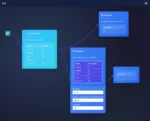
by tyler garrett | May 14, 2025 | Data Processing
In today’s rapidly evolving technological environment, data-driven decision-making is no longer a luxury—it’s a necessity. Organizations face the constant challenge of efficiently processing enormous volumes of data, both in real-time and batch scenarios. Enter Lambda Architecture—an ingenious method to unify streaming and batch data processing into a robust pipeline capable of handling diverse analytics workloads. As businesses increasingly rely on advanced analytics, frameworks like Lambda Architecture set the stage for innovative, real-time insights, ensuring organizations can swiftly respond to emerging trends and opportunities. Let’s dive holistically into the strategic and technical elements that define stream-batch unification through Lambda Architecture implementation and explore how data-centric companies can leverage these principles for maximum competitive advantage.
Understanding Lambda Architecture: The What & Why
Lambda Architecture is designed to manage enormous datasets by combining batch and real-time stream processing systems into a harmonious workflow, enabling organizations to balance accuracy, scale, and timeliness effectively. The architecture comprises three major components: batch layer, speed (streaming) layer, and the serving layer. The batch layer processes large volumes of historical data, offering precise calculations like business KPIs or trend analysis. The speed layer provides near-instantaneous processing and analysis of time-sensitive data, allowing stakeholders to quickly respond to real-time events and trends.
The key principle driving Lambda Architecture is the need for fault tolerance and scalability, which traditional batch-processing technologies alone cannot entirely address. By implementing Lambda Architecture, enterprises bridge the gap between big data analytics and real-time operational needs, resulting in substantial strategic advantages, improved data governance maturity, and deeper analytical insights across all business units.
For decision-makers struggling with outdated ETL processes holding back performance, shifting to modern ELT approaches can eliminate bottlenecks and greatly accelerate processing speeds. Check out real-world examples of successful transitions in our exploration of real use cases where ELT outperformed ETL, showcasing enormous scalability and flexibility gains achievable today. Additionally, implementing robust Lambda designs can significantly boost an organization’s readiness to adopt emerging advanced analytics and machine-learning use cases.
The Batch Layer: Laying a Solid Analytical Foundation
The batch layer forms the cornerstone of Lambda Architecture by batching large datasets into predictable workloads. This layer offers precise, thorough calculations, enabling deeper analytics like periodic reports, historical trends, and complex aggregations. Technologies such as Hadoop, Apache Spark, and analytical databases play pivotal roles within this layer. Expertly handled batch analytics can offer profound insights through calculated KPIs, analytical models, and predictive analytics—empowering organizations with a deepened understanding of customer journeys, operational efficiency, and risk management.
Leveraging SQL groupings and aggregations is often critical within batch-layer processing. Want to streamline your batch analytics? Discover refined tactics for organizing data effectively in our helpful breakdown of SQL “group by aggregating and grouping” insights. Professional implementation of batch processing ensures scalable data analytics strategies, equipping teams to effectively process sprawling datasets in a fault-tolerant environment—protecting organizational agility and maintaining analytic integrity even as data complexity grows.
With Lambda Architecture, batch processing doesn’t simply serve stagnant data but seamlessly integrates with real-time analytics—embarking on a forward-looking analytical environment capable of powerful computational storage interpretations, as detailed in our exploration of when “processing at the storage layer makes sense.” Leveraging the power of batch processing paves the way toward comprehensive analytical insights and heightened data maturity across the enterprise.
The Speed Layer: Real-Time Data Insights in an Instant
Where batch processing delivers completeness, the speed or streaming layer impressively addresses timeliness, capable of rapidly responding to events and yielding immediate analytical benefits. Utilizing stream-processing tools such as Apache Kafka, Apache Flink, or real-time streaming platforms, the speed layer swiftly processes incoming data streams, identifying patterns, anomalies, or critical alerts that decision-makers and stakeholders can swiftly leverage.
In practical scenarios, speed-layer capabilities become the force behind advanced predictive models, real-time customer sentiment analysis—such as using the techniques outlined in our article on “sentiment analysis in Python with NLTK“—or even live feeds of social media data streams. For instance, implementing techniques to easily “send Facebook data to Google Big Query using Node.js” can deliver instant insights into real-time marketing campaigns or customer interactions.
Furthermore, real-time analytics holds significant promise for forward-thinking initiatives, such as urban sustainability improvements or analyzing traffic data to enhance city planning, as illustrated in our recent showcase “improving the sustainability of Austin’s urban environment.” The speed layer thus acts as the control center that empowers a responsive, agile, and data-driven organizational mindset, which ensures competitive advantage and accelerates innovation.
The Serving Layer: Seamless Access to Unified Insights
The serving layer within Lambda Architecture acts as the delivery bottleneck-breaker, merging insights from batch processing and real-time analytics, providing stakeholders and end-users a single source of comprehensive data for decision-making. In effect, the serving layer significantly simplifies organizational data workflows by combining outputs in a unified consumption-ready format, powering dashboards, APIs, and interactive analytical solutions.
Delivering this component involves carefully considering storage and analytics performance optimization strategies. Organizations benefit tremendously from exploring how layer-specific optimizations such as “thread-local storage optimization for parallel processing” elevate the performance profile of their serving layer implementations. By harnessing top-tier technologies like NoSQL databases, columnar stores, or advanced data caching layers, companies ensure rapid query responses against both current and historical data sets.
Beyond speed, quality must remain integral. Organizations should meticulously embed data governance practices like those advocated in “ambient data governance: embedding quality control throughout the pipeline“, sustaining high-quality data delivery while enhancing trust and confidence amongst stakeholders. Similarly, deploying modern analytics frameworks and crucial Python libraries—detailed comprehensively in our “important Python libraries for enhanced development in 2023” guide—ensures ongoing analytics agility.
Strategically Adopting Lambda Architecture: Challenges & Recommendations
As with any architectural transformation, adopting Lambda comes with its own challenges. Clearly defining data processing goals, maintaining engineering expertise across batch and stream processing technologies, and appropriately sizing computational resources remain critical aspects for organizations to consider carefully.
Decision-makers should partner with seasoned analytics and data consulting teams—such as our MySQL consulting services and related bespoke data strategy offerings—to navigate through complexities seamlessly. Such partnerships enable enterprises to gain crucial expertise, optimize implementations, and ensure future-proof options against tech landscape evolution. Leveraging external knowledge ensures a well-calibrated data strategy aligned purposefully to business priorities and current technological advancements.
Combined with expert guidance, Lambda architecture offers significant rewards: improved data governance management abilities, real-time analytical responsiveness, scalable analytics frameworks, and an enterprise-wide culture of continuous data innovation.
Ultimately, Lambda Architecture represents a powerful commitment to harnessing the richness of business data, enabling the seamless combination of batch and streaming analytics. Adopt strategically. Approach cautiously. Enjoy exponential advantages in insight timeliness, accuracy, and decision quality.

by tyler garrett | May 14, 2025 | Data Processing
The importance of accurate and consistent data has never been more crucial than today, especially as organizations continue to embark on digital transformations. Enterprises increasingly interact with diverse systems and relying solely on legacy solutions simply isn’t enough to remain competitive. That’s why data reconciliation, the meticulous process of verifying consistency and reliability of data moving from source to target systems, has emerged as a critical practice for businesses committed to data excellence. Effective data reconciliation patterns are pivotal for building strong data foundations which support everything ranging from reporting to advanced predictive analytics. By mastering data reconciliation, organizations not only improve operational efficiency but also enhance trust, compliance, and strategic decision-making as they innovate within their existing infrastructures. Let’s dive deeper and unravel the robust practices of successful data reconciliation.
Understanding the Importance of Data Reconciliation
In today’s data-driven environment, discrepancies between data systems are more than a minor inconvenience—they’re a risk factor threatening the accuracy of your business intelligence and strategic decision-making. Recognizing the critical role data reconciliation plays is fundamental for any organization aiming to fully harness their data. A solid reconciliation pattern certifies data consistency and reliability from various sources as it moves towards its intended destination. This validation process ensures that stakeholders across the enterprise can make informed decisions, trusting the accuracy and timeliness of the data presented.
Precisely because discrepancies can cascade into significant business impacts, establishing firm data reconciliation standards empowers organizations to identify potential data mismatches early, rather than discovering costly errors once the data has reached the analytics or reporting layer. For instance, when leveraging predictive analytics to enhance supply chain management, as discussed in this blog article, data accuracy forms the backbone of successful implementation. Without disciplined data reconciliation practices, predictive insights could be misguided or ineffective, leading to flawed business strategies and undesired outcomes.
Thus, businesses cannot afford complacency with reconciliation processes. Prioritizing data validation between source and target systems is not only a good practice, but an essential strategic move towards digital maturity.
Key Data Reconciliation Patterns for Enterprise Systems
One-to-One Record Validation
The most fundamental data reconciliation pattern is a one-to-one validation. In this reconciliation scenario, each record from the source system is compared with its equivalent counterpart in the target system, verifying that both the data values and formats strictly match. Consider financial transactions being replicated into an accounting system or production SAP data being synced to analytical data warehouses—each individual source record must correspond exactly with the target record to confirm integrity.
For scenarios with complex or large-scale deployments, such as detailed data sets being integrated with Google BigQuery, one-to-one validation strategies remain crucial. Our experience implementing solutions to send Sage API data into Google BigQuery reinforces the importance of accurate one-to-one patterns. Individual record checks ensure no data entry slips through unnoticed, keeping analytics accurate, reliable, and auditable.
Aggregate Validation Strategy
Aggregate validation is a reconciliation pattern ideal for situations where checking every individual record is impractical or excessively resource-intensive. In this method, source data is aggregated using clearly defined metrics or calculations such as row counts, record sums, averages, maximums, minimums, or other key statistical checks. These aggregates from source systems are compared directly with corresponding aggregates from target systems.
An effective aggregate validation example is evident when building complex reports and dashboards through advanced visualization software. Trusted analytics implementations such as those delivered via advanced Tableau consulting services rely heavily on aggregate validations to verify high-level data accuracy quickly and efficiently. Discrepancies in aggregates immediately flag underlying data anomalies, enabling proactive investigations and ensuring analytics teams remain effective.
Implementing Automation and Continuous Data Reconciliation
The necessity for near-real-time data reporting and analytics demands automated data reconciliation patterns. Reacting swiftly to discrepancies minimizes potential negative impacts on business decisions and strategic insights. Automation ensures ongoing, continuous evaluation of data quality, promptly detecting and correcting errors as they’re found.
Innovative data reconciliation solutions increasingly rely on optimized data infrastructure patterns, including data pipelines deliberately designed for reliability and maintainability. By leveraging effective data practices as covered thoroughly in “Designing Data Pipelines for Reliability and Maintainability,” enterprises automate reconciliation tasks via workflow orchestration and automation tools, reducing human error and significantly improving consistency in data quality delivery.
Automated reconciliation not only streamlines vast reconciliation workloads, but also tracks historical reconciliation results for audit and compliance purposes, ensuring confidence at every level—from technology personnel through to executive stakeholders relying on precise data for strategic decision making.
Integrating Isomorphic Data Processing Methods for Robust Reconciliation
Another powerful reconciliation strategy is the adoption of isomorphic data processing techniques. Simplifying application logic distribution between client and server reduces data discrepancies and naturally aligns data processing across various business units. Utilizing effective methods such as those explored in our article “Isomorphic Data Processing: Sharing Logic Between Client and Server” promotes consistency, reduces reconciliation complexity, and enhances overall data governance.
By standardizing data processing logic and eliminating duplication across heterogeneous systems, businesses significantly reduce the potential for reconciliation errors. Isomorphic processing structures unify your organization’s data strategy, strengthen confidence in analytics accuracy, and positively impact operational reliability—thus transforming raw data into strategic insights effortlessly and reliably across all business domains.
Navigating Legacy Systems in Data Reconciliation
One frequent challenge organizations face when establishing data reconciliation practices is integrating with legacy systems—a situation often perceived as complex, limiting, or costly. However, this shouldn’t prevent companies from achieving excellent reconciliation standards. Effective strategies for innovating within older, complex technology environments are explored at length in our insightful article “How to Innovate Inside Legacy Systems Without Replacing Them“. Understanding how to successfully reconcile legacy data is critical to modernizing analytics capabilities without having to fully rebuild core systems.
Leveraging middleware integration layers, sophisticated APIs, or low-impact incremental reconciliation processes enables organizations to steadily improve data integrity and reliability without abandoning existing investments. Reconciliation audits and automated checks, combined with thoughtful strategic approaches and incremental modernization strategies, empower enterprises to confidently enhance legacy system data management without upheaval or major disruption.
Solving Real-World Data Reconciliation Challenges and Bottlenecks
Organizations consistently encounter practical reconciliation challenges like capacity limitations—for example, attempting reconciliation among large Google Sheets files. As discussed in “The Ability to Connect to Google Sheets Greater Than 10 MB,” understanding the limitations of your technology stack enables smarter reconciliation planning.
Similarly, when reconciliation issues arise due to environmental issues or unexpected system behavior—such as needing advanced troubleshooting techniques like those covered in “Start Windows 10 in Advanced Boot Options“—organizations must be prepared to swiftly address these technical roadblocks without negatively impacting analytical output deadlines. Implementing robust troubleshooting and remediation procedures into your reconciliation workflows ensures minimal downtime and maximum reliability.
At Dev3lop, we’ve seen how organizations combining thoughtful reconciliation patterns with disciplined data governance principles succeed repeatedly in achieving excellence and reliability from their data sources, effortlessly turning business chaos into ordered, actionable insights through highly structured data architecture.
Conclusion: Reconciliation Success Depends on Strategic Approach
Effectively reconciling data between source and target systems depends on a deliberate, strategic approach leveraging industry best practices. Whether you employ aggregate validations, automate reconciliation processes, or streamline system logic through isomorphic data processing—every step strengthens digital maturity, analytics accuracy, and strategic capabilities. Remember, investment in effective data reconciliation is not simply an operational best practice—it’s a fundamental competitive advantage in today’s data-driven economy.

by tyler garrett | May 14, 2025 | Data Processing
The digital ecosystem today thrives on speed, accuracy, and reliability, putting immense pressure on organizations to stay ahead of operational disruptions. An organization’s data pipeline—the lifeline facilitating the seamless movement of data between various sources and destinations—needs an effective notification strategy to alert stakeholders when issues arise or statuses change. In a landscape where agility forms the basis of competitive advantage, high-performing notification systems are no longer optional but an essential asset of modern enterprises. Effective notifications ensure that stakeholders can be responsive instead of reactive, accelerating decision-making and reducing the likelihood of costly downtime. Whether you are managing complex analytics workflows, real-time processing, or automated reporting pipelines, mastering notification systems can equip your team with proactive insights. In this article, we delve into the vital elements of notification systems that monitor pipeline health, sharing best practices and technologically sophisticated approaches from our consulting experience helping clients navigate complex data and analytics environments.
Why Pipeline Notifications Are Crucial for Modern Analytics
Data is the backbone of decision-making in nearly every organizational task, from financial forecasting and market analytics to operational efficiency. Just having data isn’t enough; managing it properly and responding quickly to changes or errors is critical. This underscores the necessity of reliable notification systems integrated within your analytics pipelines. Without them, organizations risk delayed issue diagnosis, ineffective resource allocation, and potentially catastrophic pipeline failures that can cascade into broader operational disruptions.
Imagine a scenario where critical financial insights depend on an automated ETL (Extract, Transform, Load) pipeline. Should an unexpected event disrupt data ingestion, a well-structured notification system promptly informs the responsible team members, allowing them to resolve the issue before it impacts reports or dashboards used by executives. At Dev3lop, we’ve encountered numerous instances where implementing proactive notifications was pivotal to helping organizations transition successfully from traditional reporting paradigms, such as Excel-based reporting to robust data warehousing solutions.
Beyond problem-solving, a well-established alert mechanism provides visibility and traceability into pipeline health and performance trends. Analytics teams gain continuous awareness of their infrastructure status, enabling them to optimize processes and achieve higher operational efficiency. This combination of timely notifications and performance analytics empowers stakeholders by delivering critical insights right when they’re needed, bridging gaps between technology execution and strategic decision-making.
Components of an Effective Notification System
Real-Time Monitoring and Alerting
At the heart of effective pipelines is real-time, event-driven monitoring. Modern analytics rely heavily on real-time data synchronicity, and the slightest delay could hinder operations significantly. Establishing real-time monitoring alongside change data capture topologies for event-driven analytics reduces latency between event and awareness. Prompt notifications generated in real-time empower decision-makers, minimizing disruptions caused by unforeseen failures or data discrepancies.
Comprehensive User-Friendly Dashboards
Dashboards offer a centralized location to view pipeline statuses, historical logs, and operational metrics. Providing stakeholders with user-friendly visualization dashboards ensures they can grasp complex information at a glance. With comprehensive displays specifically designed to empower technical and executive-level users, your notification systems aid in efficient troubleshooting, clarity in analytics workflows, and transparency across stakeholders. Leveraging solutions provided through advanced consulting services, like Advanced Tableau Consulting Services, ensures creation of intuitive dashboards that capture essential insights succinctly.
Flexible Customization and Alert Management
Every organization’s pipeline infrastructure and operational contexts differ. Your alert and notification solution must, therefore, accommodate varying degrees of customizability. Prioritization and targeted alerts enhance usability, ensuring that the correct stakeholder receives timely, relevant communication. Advanced notification systems allow users to define thresholds, prioritization standards, and personalized messaging rules, streamlining complex pipeline environments into a manageable framework profoundly aligned with business procedures and roles.
Notification Delivery Methods and Channels
The effectiveness of pipeline notifications depends heavily on channels and methods of delivery to achieve timely, actionable alerts. Email notifications are commonly used, but relying exclusively on a single channel limits responsiveness. Sophisticated pipeline notification procedures often utilize multi-channel strategies, combining emails, push notifications, webhook integrations, SMS texts, messaging platforms (Slack, Teams), and automation tools such as PagerDuty.
Employing multi-channel notification delivery ensures critical pipeline issues won’t be ignored or overlooked, as stakeholders receive alerts in their preferred platforms. Dev3lop has developed targeted micro applications that seamlessly integrate notifications within business workflows, streamlining agile responses to analytics disruptions.
Furthermore, ensuring that your solution integrates easily with workflows enhances efficiency, guaranteeing rapid action in response to alerts. Forward-thinking organizations further integrate solutions like SAML Forward Proxy Tableau to secure accessibility and authentication layers—ensuring notification data remains protected and compliant with organizational governance.
Best Practices for Optimizing Notification Systems
To reap maximum benefits from your pipeline notification systems, follow best practices drawn from industry insights and our consulting experience:
Reduce Alert Fatigue
Alert fatigue arises when too many irrelevant notifications drown out the critical ones. Implementing meaningful thresholds, notification grouping, and the regular review of notification relevance ensures stakeholders only receive messages that truly matter. By carefully evaluating the necessity of each alert and crafting intuitive filters, analytics operations can significantly reduce alert fatigue, delivering sharper focus on genuine issues and enabling accurate, swift remediation.
Bi-Directional Synchronization
Modern data pipelines are complex, often involving multiple interrelated platforms and systems. Implementing bidirectional synchronization patterns between systems ensures timely and contextually relevant pipeline status updates. Two-way synchronization keeps downstream consumers informed at all times, effectively unifying notifications across heterogeneous systems and improving response coordination between operational teams.
Automated Escalation Paths
No pipeline alert is valuable unless addressed timely. Automated escalation ensures prompt attention even when primary notification channels fail or recipients don’t recognize an alert immediately. A robust notification system incorporates clearly defined escalation paths, dynamically rerouting notifications based on urgency levels and organizational hierarchy, thereby eliminating uncertainties and potential complacency toward critical pipeline disruptions.
Common Mistakes When Implementing Notification Systems
In our consulting engagements, we often notice common mistakes impacting notification reliability and clarity. A few pitfalls analytics teams must avoid:
Not Including Enough Context
Notifications lacking sufficient context lead to delays or incorrect responses due to confusion and incomplete understanding. Clearly structured alerts ensure stakeholders understand the type, severity, location, and causes of problems without needing additional troubleshooting. Ensure notifications include clear descriptions, error codes, timestamps, impacted systems, and guided recommendations for troubleshooting or escalation.
Insufficient Documentation and Training
Teams often overlook adequately documenting notification procedures or training relevant staff on systems, reducing response effectiveness. Comprehensive training, documentation, and clear escalation policies ensure all staff understand expectations, notification interpretation, and response steps—which improves response speed and resolution effectiveness significantly.
Steer clear of common pitfalls through proactively identifying and avoiding popular data engineering mistakes, including reviewing our recommendations around common data engineering anti-patterns to maintain high-quality data pipeline workflows and reliable notifications.
Innovative Notification Solutions: Blockchain and Event-Driven Technologies
Emerging technologies offer innovative possibilities to further improve pipeline notifications’ accuracy, security, and responsiveness. Blockchain technology, for instance, provides immutable records ideal for securely logging notifications, alert history, and response actions. As detailed in Blockchain’s Potential Impact on the Data Industry, blockchain ensures notifications remain non-repudiable for compliance or regulatory purposes.
Further, event-driven architectures and real-time analytics empower notifications to become instantly actionable. Flexible and scalable event-driven technologies ensure consistent responsiveness to frequently changing pipeline inputs, reducing latency between events and alert triggers significantly. Embracing these innovations positions organizations toward increasingly responsive, reliable analytics pipelines.
Conclusion: Ensuring Pipeline Reliability Through Proactive Notifications
A carefully implemented notification system provides peace of mind and improved operational efficiency throughout data-driven environments. By proactively notifying stakeholders on pipeline statuses, empowering clearer remediation efforts, and leveraging modern technology trends, your entire analytics operation becomes smarter and more reliable. Embrace strategic thinking in your notification systems; engage trusted consultants specialized in data, analytics, and innovation to build stronger, more robust analytics frameworks capable of competing at the highest levels.

by tyler garrett | May 13, 2025 | Data Processing
In today’s era of data-driven decision making, organizations face the challenge of maximizing the value they derive from their analytical frameworks. Traditional analytics solutions cover standard scenarios, but unique business situations often require custom-built analytical approaches such as specialized window functions. Implementing custom window functions allows companies to deeply analyze and derive insights from their datasets with unprecedented accuracy and flexibility. As data advocates and technology strategists, we recognize the importance of innovative analytical methods and their transformative potential. By developing sophisticated custom window functions, you’re enabling a granular, dynamic view of your outcomes, trends, and opportunities—unlocking competitive advantages previously considered inaccessible.
Understanding Window Functions for Advanced Analytics
Window functions are an essential component of advanced data analytics. Unlike traditional SQL queries, window functions perform operations over a defined set of rows—referred to as a “window”—while allowing the original data rows to remain unchanged. They enable analysts and developers to calculate running totals, rank records, and efficiently compute moving averages or percentiles, significantly enhancing data insights and analytical workflows.
For example, typical database operations consider individual rows independently or aggregate data across multiple rows, but window functions provide the versatility of performing calculations within specified subsets (windows) without collapsing row granularity. This characteristic makes them particularly valuable in tasks such as customer segmentation, real-time inventory management, financial forecasting, and trend analysis. For technical stakeholders, distinguishing clearly between traditional SQL aggregation methods and window functions is crucial; our guide Understanding Union and Union All in SQL can help clarify fundamental data operations.
While standard window functions—including ROW_NUMBER(), RANK(), and SUM() OVER()—are adequate for many use cases, complex analytical requirements often require customized window functions tailored specifically to your business strategy. Taking the step from common functionality toward customized solutions can unlock significant business insights, offering high-performing queries designed specifically around your operations.
When Do You Need Custom Window Functions?
The decision to implement custom window functions typically arises when built-in solutions fall short of handling highly specialized analytical scenarios. Indicators that your business may benefit from custom solutions include overly complex data transformations, the need for idempotent data processing approaches, or persistent inconsistencies in result sets generated via standard techniques. It’s important to evaluate whether your current approach limits the insights produced from available data or introduces data inaccuracies, slowing the ability to take data-driven actions effectively.
Common scenarios that necessitate custom window functions include cumulative profit analysis with special aggregation criteria, real-time behavioral analytics incorporating custom weighting factors, detailed funnel analytics tracking user journey stages dynamically, or time-series analytics integrating complex business logic into calculations. If you’re uncertain regarding your analytics infrastructure maturity level, consider conducting a DataOps maturity assessment to identify areas needing enhanced analytical customization.
Businesses demonstrating continual growth in analytics complexity or increased troubles ensuring reliability during data reprocessing will greatly benefit from exploring tailored solutions such as idempotent data transformations ensuring consistency. Customizing window functions in these scenarios significantly reduces error risks while maintaining clarity, accuracy, and consistency of results.
Developing Customized Window Functions: Key Considerations
When undertaking the creation of customized window functions, forward-thinking organizations must consider fundamentals related to maintainability, scalability, and compatibility. Initially, clearly define your business requirements. How do specific window definitions impact key metrics and decision points? Properly mapping business-critical scenarios ensures the developer team can utilize strategic SQL or MySQL deployments effectively.
In-depth knowledge and solid technical infrastructure play pivotal roles in successful custom window function implementation. Specialized SQL and MySQL expertise—whether developed internally or obtained through collaborative external partners—accelerate this process substantially. Organizations may significantly boost their implementation effectiveness and timeliness through assistance from MySQL consulting services, ensuring technical insights translate effectively into practical solutions.
Equally critical is ensuring rigorous standards around automated testing workflows, integrating frameworks that regularly evaluate and validate custom window functions against business rules and theoretical result expectations. The guide on automated data testing strategies for continuous integration can serve as an excellent resource in this context, providing guidelines that facilitate stable deployments of customized analytical solutions at scale.
Real-Life Applications of Customized Window Functions
Custom-designed window functions can transform an organization’s analytics capacity dramatically. For example, retail businesses can use specialized window functions for dynamic replenishment forecasting—identifying sales trends by incorporating industry-specific seasonality factors. Financial services organizations might develop custom trading analytics that rank assets’ expected profitability based on transaction speeds and real-time market data. Similarly, healthcare providers often require tailored functions for patient data analytics, which demand nuanced programming calculations around longitudinal patient records and complex anonymization criteria.
In ecommerce platforms, tailored window functions enable nuanced customer segmentation—assessing the cumulative lifetime value of customers alongside dynamically changing behaviors. Additionally, specialized analytics targeting specific user engagement metrics—particularly for SaaS businesses—can drive improved personalization features, allowing targeted adjustments that enhance client retention and satisfaction rates. Customized implementations critically ensure analytics directly address business-specific opportunities, facilitating competitive advantages in the market.
Selecting the right underlying analytics infrastructure is also critical—particularly for businesses experiencing rapid data scale and complexity growth. If you’re observing difficulty scaling your database infrastructure or inadequate data accessibility negatively affecting analytical productivity, consider reviewing these signs your business needs a data warehouse today. Specialized database technologies combined with customized functionalities deliver powerful analytical insights tailored to your evolving data needs.
Integrating Custom Window Functions into Your Analytics Stack
The transition toward utilizing custom window functions within your analytics architecture necessitates a structured, disciplined integration approach. First, teams should establish a robust data observability practice to track and continuously improve analytics usage, as outlined in our article Implementing a data observability strategy. This proactive oversight identifies gaps or data drift immediately, helping refine analytical functions effectively.
Secondly, collaboratively integrating AI agents or machine learning-based models alongside your analytics stack can elevate the potential of custom window functions. As discussed in our resource about the core principles of AI agents, intelligent systems integrated with specialized window functions provide powerful analytics frameworks capable of proactive decision criteria, reducing manual intervention while sustaining elevated performance.
Finally, prioritize collaborative, agile team operations. Engaged technical teams working closely with analytics end-users deliver enhanced function designs and achieve seamless integration. Adopt DevOps and DataOps methodologies—ensuring functions remain maintainable, scalable, and aligned with business objectives. Integrating customized window functions strategically positions your organization’s analytics capabilities to tackle complex challenges and adapt swiftly in the face of future opportunities.
Conclusion: Unlock Your Analytics Potential with Customized Solutions
In highly competitive industries, analytics are increasingly vital for differentiation. Implementing customized window functions precisely tailored toward specialized analytical tasks positions businesses strategically in today’s data-driven economy. Evaluate your current analytics approach, and recognize the untapped potential this custom solution brings in clarity, accuracy, and agility.
Whether you’re beginning your journey into advanced SQL analytics or optimizing your current frameworks, embracing specialized functionalities opens strategic doors. Ultimately, this development positions your organization firmly ahead in analytics-driven innovation, directly enhancing your business insights, decision agility, and competitive advantage in your market.

by tyler garrett | May 13, 2025 | Data Processing
In today’s rapidly evolving tech landscape, businesses face unprecedented challenges in managing variable pipeline workloads efficiently. Data volumes grow exponentially, workload patterns shift unpredictably, and legacy resource management strategies quickly become obsolete. To remain competitive and maximize performance, organizations must embrace dynamic resource allocation—a smarter, automated approach that boosts responsiveness, minimizes waste, and enhances scalability. As leading experts in data, analytics, and innovation, we’ve guided numerous organizations in overcoming resource allocation hurdles by leveraging cutting-edge strategies and technologies. Let’s break down exactly why dynamic resource allocation is critical and how you can implement it intelligently within your pipeline processes.
Understanding the Need for Dynamic Resource Allocation
Many organizations adopt rigid, static resource allocation models due to their simplicity and ease of implementation. However, these static methods often fall short in addressing fluctuating data pipeline demands. Pipeline workloads frequently vary with changes in user behavior, evolving application requirements, and unpredictable spikes in transaction volumes. Failing to adapt swiftly results in resource bottlenecks, degraded performance, or excessive idle resources, directly impacting your budget and productivity.
Consider startups we’ve previously analyzed in our blog on the top 5 data mistakes found in startups this year. One critical oversight frequently observed was insufficient resource flexibility, causing delays in delivering actionable insights. With dynamic resource allocation, organizations can automatically scale resources based on real-time workload variability, substantially improving efficiency and responsiveness.
Dynamic allocation allows for adaptive decision-making that aligns resources to actual demand, rather than speculative provisioning. This results in powerful savings in both time and costs, while simultaneously improving operational agility. As your analytical pipeline grows more complex, incorporating robust resource allocation strategies will become essential to staying competitive and innovative.
Key Technologies behind Smart Resource Allocation
A successful dynamic resource allocation strategy leverages a powerful yet balanced stack of modern technologies, including advanced analytics, cloud infrastructure automation, container orchestration tools, and AI and machine learning-driven predictions. By employing approximate and predictive analytics, such as methods discussed in our previous post on approximate query processing for interactive data exploration, organizations gain the rapid insight needed to effectively allocate necessary resources.
Beyond analytics methods, tools such as Kubernetes have become instrumental, automating containerized application deployment and resource management. Cloud-native solutions, like AWS Auto Scaling or Google Cloud’s Kubernetes node auto-provisioning, further aid automation by dynamically scaling applications according to workload demand, ensuring peak resource efficiency.
Programming frameworks like Node.js have also emerged as highly effective for building scalable, real-time applications that adjust resource use dynamically. Our own expertise in Node.js consulting services has enabled many companies to harness this robust environment’s asynchronous processing power and flexible architecture, creating responsive data solutions capable of adapting fluidly to workload fluctuations.
The Impact of Advanced Analytics on Resource Allocation
Advanced analytics plays a crucial role in dynamic resource allocation by accurately forecasting demand and optimizing resource deployment accordingly. Machine-learning models trained on historical workload data can effectively predict usage patterns, pipeline demand variations, and spikes in user activity. Sophisticated analytics techniques such as anomaly detection, data drift monitoring, and trend analysis provide real-time understanding of operational health, informing intelligent resource management decisions.
Incorporating tools for metric drift detection and statistical methods for monitoring data health allows organizations to quickly detect deviations from expected parameters and proactively reallocate resources to mitigate any emerging bottlenecks. By identifying patterns early, businesses can avoid costly system slowdowns or outages, boosting both resilience and user confidence.
Another use case can be found in optimized querying differences like those mentioned in our write-up about sending LinkedIn data to Google BigQuery with Node.js. This detailed example illustrates how strategically chosen analytics and programming tools enable smarter data exchanges and preemptive resource allocation for diverse pipelines.
Integrating Geospatial Intelligence into the Dynamic Resource Framework
Incorporating geographic and time-based data enhances your dynamic resource allocation strategy substantially—especially critical for businesses dealing with geographically distributed resources or significant location-specific demands. Geospatial analytics offers visibility into location trends, enabling efficient resource distribution across regions, thus meeting specific demand profiles efficiently. Such intelligent spatial allocation directly contributes to maintaining top-tier service performance and operational excellence.
Effective examples include integrating spatio-temporal indexing structures for location intelligence, ensuring analytics query capabilities keep pace with your organization’s real-time resource management requirements. Timely insights into spatial-temporal demand enable fine-grained resource distribution.
This technology proves particularly impactful in public safety, as explored in our recent case study showcasing the role of data analytics in enhancing public safety in Austin. Dynamic spatial-temporal allocation ensures timely emergency services deployments, effectively optimizing critical resources. These strategies can also apply across industries—from smart logistics to predictive infrastructure planning—streamlining operations globally.
Using Data Science Tools for Improved Predictability
Data science toolkits are vital assets in heightening predictability, enabling robust, behavior-induced resource planning. Tools like Anaconda3, discussed thoroughly in our guide to setting up Anaconda3 as a data science toolkit, equip development teams with powerful, flexible frameworks suited for predictive modeling and iterative experimentation.
Anaconda supports rapid prototyping and deployment of machine learning algorithms, allowing organizations to experiment with different forecasting techniques and analytical methodologies to determine optimal resource allocation rules. By leveraging data science tools, businesses can iterate quickly, deploying predictive models that precisely anticipate workload surges, thus efficiently planning and scaling resources ahead of demand peaks.
Choosing the correct analytical and predictive toolsets significantly reduces guesswork, instead empowering teams to manage resources proactively, ensuring consistent high-level performance even in the face of unanticipated workload variability. Strategic use of modern data science tooling adds critical resilience, agility, and responsiveness to dynamic resource allocation initiatives.
Assessing Financial and Operational ROI for Dynamic Allocation
Decision-makers implementing dynamic resource allocation naturally ask questions around costs and return on investment (ROI). Static models often waste considerable resources, while dynamic allocation strategies demonstrably reduce waste, lower cloud-based expenses, and increase utilization—yielding measurable financial savings and operational benefits over time.
By proactively matching infrastructure spend directly to real-time demand levels, companies significantly decrease unnecessary resource expenditure. Also, investing in predictive models and dynamic scaling technologies inherently supports agile, data-driven business cultures capable of swiftly adapting to market changes.
Accurately tracking dynamic resource allocation’s financial ROI demands careful strategic planning and often detailed pricing considerations, as discussed in our Tableau pricing analysis. Understanding detailed cost and benefit aspects ensures transparent assessments, builds stakeholder buy-in, and justifies investment in sophisticated resource allocation systems.
From faster deployment to smarter asset use, dynamic allocation strategies deliver clear competitive advantages, ensuring minimal downtime and optimal resource allocation under all operational circumstances, significantly impacting your organization’s profitability and long-term operational efficiency.
Conclusion: Embracing Dynamic Resource Allocation
Dynamic resource allocation is no longer a convenience—it’s quickly becoming an operational necessity in the rapidly evolving modern enterprise. Embracing dynamic allocation ensures your organization is resilient, responsive, proactive, and ready to face future challenges in data analytics and beyond. As technologies mature, we see increasing adoption of sophisticated predictive modeling, cloud innovations, and geo-spatial intelligence fueling agile resource allocation practices.
With our expert consulting experience captured here at Dev3lop, supporting numerous data, analytical, and innovative strategies, we recognize that flexible, intelligent resource allocation is paramount to future-proofing your pipelines. Adopting dynamic allocation today can position your enterprise for lasting clarity, security, and scalable growth tomorrow.

by tyler garrett | May 13, 2025 | Data Processing
Data is growing exponentially, and with it comes the critical need for sound strategies that optimize processing power and accelerate analytics initiatives. Organizations amass vast volumes of structured and unstructured data every day, making it crucial to manage computational resources wisely. Dataset sampling techniques stand at the forefront of efficient data-driven innovation, enabling businesses to derive insightful analytics from smaller, yet highly representative snapshot datasets. As industry-leading data strategists, we understand that optimization through strategic sampling isn’t just good practice—it’s essential for maintaining agility, accuracy, and competitive advantage in today’s data-intensive landscape.
Understanding the Need for Optimized Dataset Sampling
In an era dominated by big data, organizations confront the challenge not just to gather information—tons of information—but also to process and utilize it in a timely and cost-effective manner. Complete analysis of vast datasets consumes significant computational resources, memory, and time, often beyond reasonable budgets and deadlines. It’s simply impractical and inefficient to process an entire mammoth-sized dataset every time stakeholders have questions. Thus, sampling techniques have become fundamental towards optimizing data processing.
Data analysts and engineers increasingly leverage analytics project prioritization to tackle projects effectively—even within constrained budgets. Strategic allocation of resources, as discussed in our guide on how to prioritize analytics projects with limited budgets, underscores the importance of processing optimization. Sampling techniques mitigate this issue by selectively extracting subsets of data, rigorously chosen to accurately reflect the characteristics of the entire dataset, significantly reducing computational burdens while preserving analytic integrity.
This approach is especially valuable in contexts like real-time analytics, exploratory analysis, machine learning model training, or data-driven optimization tasks, where agility and accuracy are paramount. With well-crafted sampling techniques, businesses can rapidly derive powerful insights, adjust strategies dynamically, and maintain competitive agility without sacrificing analytical depth.
Key Dataset Sampling Techniques Explained
Simple Random Sampling (SRS)
Simple Random Sampling is perhaps the most straightforward yet effective technique for dataset optimization. This method selects data points entirely at random from the larger dataset, giving each entry equal opportunity for selection. While it’s uncomplicated and unbiased, SRS requires properly randomized selection processes to avoid hidden biases.
This randomness ensures that sampling errors are minimized and that generated subsets accurately represent population characteristics, allowing analytics teams rapid insights without complete resource commitments. Organizations keen on accuracy and precision should refer first to analytics strategies discussed in our guide about ensuring accurate data representation.
Stratified Sampling
Stratified sampling divides the dataset into distinct “strata” or subgroups based on specific characteristics similar within each subgroup. Samples are randomly drawn from each stratum, proportionate to the strata’s sizes relative to the entire dataset.
This approach offers more precision than SRS because each subgroup of interest is proportionally represented, making it uniquely advantageous where data diversity or critical sub-segments significantly impact overall analytics and insights. Stratified sampling gives data practitioners more targeted analytical leverage, especially to support informed decision-making about resource allocation.
Cluster Sampling
Cluster sampling splits data into naturally occurring clusters or groups, after which certain clusters are randomly selected for analysis. Unlike stratified sampling—where individual data points are chosen—cluster sampling uses whole groups, leading to simplified logistics and reduced complexity during large-scale datasets.
Applied correctly, this approach delivers rapid analytics turnaround, especially where the dataset’s physical or logistical organization naturally lends itself to clusters. For example, geographical data often aligns naturally with cluster sampling, enabling quick assessments of localized data-changes or trends without an exhaustive analysis.
Advanced Sampling Techniques Supporting Data Analytics Innovation
Systematic Sampling
Systematic sampling involves selecting every n-th data point from your dataset after initiating a random starting point. It maintains simplicity and efficiency, bridging the gap between pure randomness and structured representation. This technique thrives when data points don’t follow hidden cyclic patterns, offering reliable subsets and optimized performance.
Systematic sampling is particularly valuable in automated data processing pipelines aimed at enhancing reliability and maintaining efficiency. Our insights discussed further in designing data pipelines for reliability and maintainability showcase systematic sampling as an intelligent stage within robust data engineering frameworks.
Reservoir Sampling
Reservoir sampling is indispensable when dealing with streaming or real-time datasets. This algorithm dynamically selects representative samples from incoming data streams even if the total data extent remains unknown or immeasurable in real-time.
This powerful sampling method optimizes resource management drastically, removing the necessity to store the entire dataset permanently, and benefiting scenarios with high volumes of transient data streams like IoT systems, market feeds, or real-time analytics applications. Leveraging reservoir sampling can drastically improve real-time analytics delivery, integrating efficiently with rapidly evolving AI- and machine-learning-driven analyses. Learn more about trusting AI systems and integrating robust software strategies effectively in our article covering trusting AI software engineers.
Adaptive Sampling
Adaptive sampling dynamically adjusts its strategy based on certain conditions or early analytical results from prior sampling stages. Encountering significant variations or “metric drift,” adaptive sampling intelligently changes sampling criteria to maintain dataset representativeness throughout the analysis.
Additionally, adaptive sampling profoundly benefits data-quality monitoring efforts, extending beyond optimization to maintain continuous oversight of critical data metrics and populations. We discuss approaches to data quality and metrics variations comprehensively in our guide on metric drift detection and monitoring data health.
Practical Considerations and Best Practices for Sampling
Successfully executing dataset sampling doesn’t just rely on theoretical methods—it depends greatly on understanding data structures, business context, and analytical goals. Always clearly define your objectives and analytical questions before implementing sampling techniques. Misalignment between these elements might result in incorrect or biased interpretations and decisions.
Leveraging sampling best practices includes comprehensive documentation and clearly defined selection criteria, greatly facilitating repeatability, audit trails, and long-term maintainability. Treat sampling methods as integral parts of your broader data strategy, embedded within your organizational culture around data-driven innovation.
Consider partnering with expert consultants specializing in visualization and data interpretation—such as the services provided by our industry-leading data visualization consulting services. Professional expertise combined with sampled insights can amplify the precision and clarity of your data storytelling and enhance strategic communication, driving business success.
Implementing Sampling Techniques for Analytics and Innovation in Austin, Texas
In a thriving technology hub like Austin, leveraging dataset sampling can offer exceptional insight generation and optimized processing power critical for sustained innovation. Texas businesses seeking competitive differentiation through data analytics will find immense value in exploring sampling techniques that improve speed, reduce cost, and deliver rapid results.
From startup accelerators to Silicon Hills’ enterprise giants, impactful analytics strategies can provide businesses invaluable growth opportunities. Explore our dedicated coverage on 11 ideas for using data analytics in Austin, Texas to further connect dataset sampling to local driving forces in analytics and innovation.
By embracing thoughtful, targeted sampling strategies, Austin-based ventures, enterprises, and public sector organizations can position themselves for future-ready analytics capabilities, effectively navigating data complexity while generating powerful, enlightening insights.
In conclusion, dataset sampling techniques provide invaluable pathways toward efficient, accurate, and agile analytics. Understanding, selecting, and optimizing these techniques lays the foundation supporting true data-driven decision-making and organizational resilience, allowing leadership to pursue business insights confidently and strategically.






























